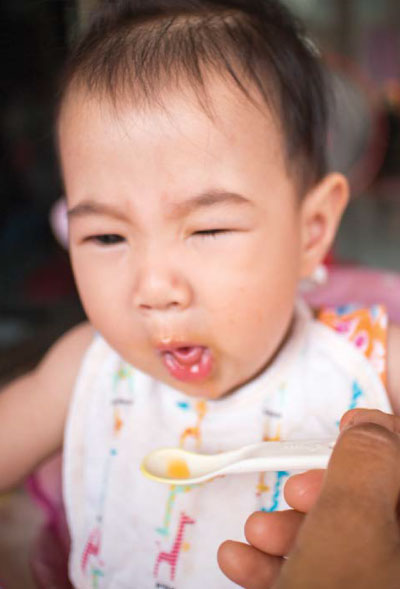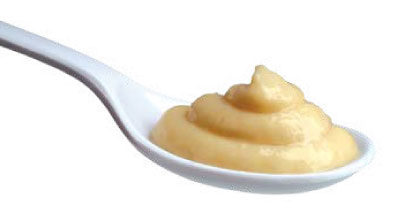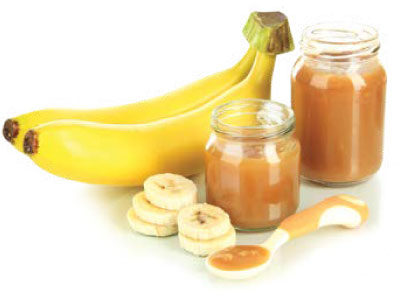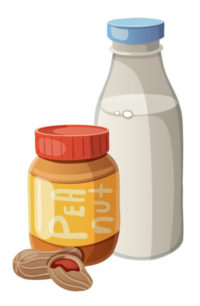Does your family have a history of food allergies? Afraid to give your child her first taste of peanut butter? Do you dread to feed her fish, eggs or milk? Relax, here’s how you can safely introduce potentially allergenic food to your baby.
Research has shown that compared to those with no family history of allergic disease, “high risk” children (one immediate family member with a history of any allergic disease) showed only a modest increase in risk of food allergy. However, the risk does increase significantly if there are two or more family members who are allergic.
Regardless, you can’t help but feel worried for your child as you start to wean her off breastmilk and onto solids. As your baby grows, her nutritional needs increase and breastmilk alone becomes no longer sufficient. Furthermore, delaying the introduction of these foods may increase your baby’s risk of developing allergies.
Benefits of Early Introduction of Allergenic Foods is Scientifically Proven
The Learning Early about Peanut Allergy (LEAP) trial was the first randomized trial to show the benefit of early introduction of a major food allergen. The trials revealed that early introduction of peanuts at 4 to 11 months of age were associated with a decreased risk of developing peanut allergy.
A follow up trial of the same participants, called LEAP-On, concluded that 4 years of peanut consumption was sufficient to induce tolerance to peanuts even if a person stopped eating peanuts for some time (i.e. a year).
Authors of the study also recommend prolonging exposure/consumption of peanuts (beyond 4 years) to maintain tolerance long-term; a strategy that has worked for people allergic to things like grass pollen and stinging insect venom.
1. SAFEST TIME FOR INTRODUCTION
If your child is not affected by any type of allergy or atopic disease, you can start at about the same time you introduce solid foods which should be around 4-6 months of age and provided your baby’s neck control is strong and steady. Additionally, you should expose your baby to a wide variety of healthy foods of different texture, aroma and taste.
If your child has severe eczema and/or other food allergies, you can still introduce them to foods like peanuts (pureed) at about 6 months but only after they have been successfully fed other types of solid foods first. This is to ensure that they are developmentally ready.
2. START SMALL & START AT HOME
Introduce highly allergenic foods to your baby with the first taste being at home where it is easier to assess her reaction. Start by feeding them small bits of the food. If your baby shows no signs of allergic reaction, gradually increase the amount. You can introduce one new food every 3 to 5 days.
3. SINGLE-INGREDIENT FOODS FIRST
It really doesn’t matter which foods you want to offer your baby first. But for babies with a family history of allergy and who has not had an allergic reaction to a food before, start with single ingredient foods (SIF) before moving on to introduce highly allergenic ones. Examples of SIF include rice, oat cereal, vegetables (sweet potato, potatoes and carrots), green vegetables, and fruits (apples, pears and bananas).
Peanut Puree Recipe
- Add hot water or warm milk to 2 teaspoons of peanut butter and mix well.
- Place a bit of the puree at the tip of a spoon and feed baby.
Choking Hazard!
Make sure to process solid foods to puree before serving it to your baby. The texture and shape of the food you give should be appropriate for her developmental age.
PROPERLY EVALUATE YOUR CHILD’S ALLERGY
A detailed assessment of allergic history and testing is advised before the introduction of highly allergenic foods if your child has:
- moderate-to-severe eczema.
- had an immediate allergic reaction to a food or breast milk.
Allergies cannot be self-diagnosed at home and should be done by an expert (i.e. paediatric allergist). Along with a patient’s medical history, the results of the allergy test can confirm whether or not symptoms are indeed caused by allergies or not. It would also be able to identify the specific substances that trigger allergic reactions. If the diagnosis is positive, the most appropriate and effective treatment can then be determined.
An educational contribution by Malaysian Paediatric Association.










Comments